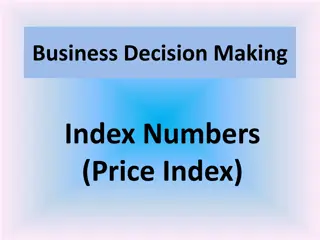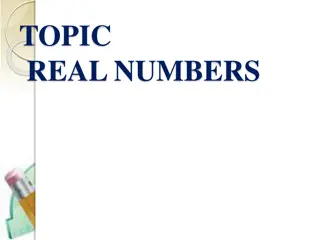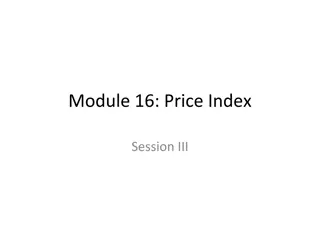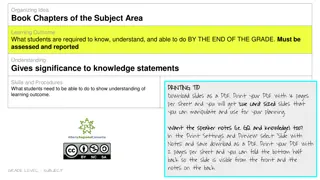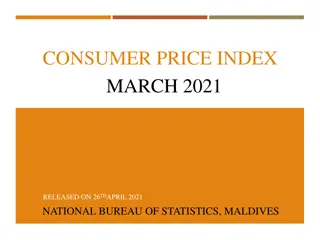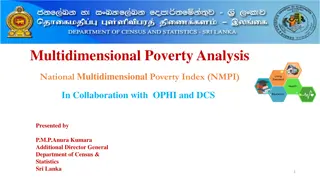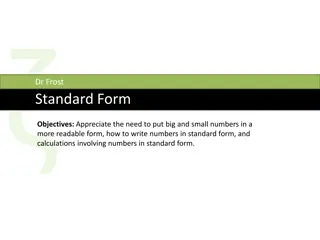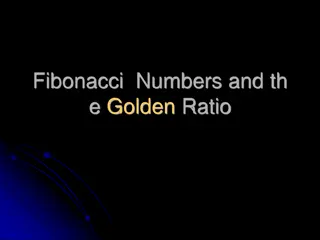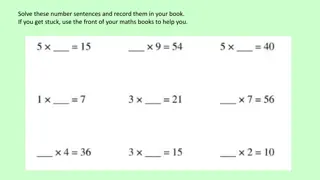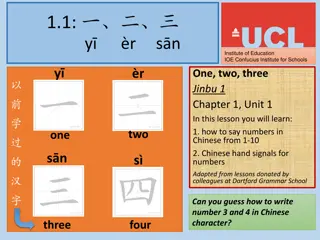Understanding Index Numbers in Economics
Index numbers are essential in economics to compare trends and fluctuations in data, reflecting changes in quantities over time. They help analyze relative changes and are expressed as percentages. Base year selection, representative prices, and commodity inclusion are crucial in constructing accurate index numbers. Various methods like fixed base and chain base are used to calculate these indices.
Download Presentation

Please find below an Image/Link to download the presentation.
The content on the website is provided AS IS for your information and personal use only. It may not be sold, licensed, or shared on other websites without obtaining consent from the author. Download presentation by click this link. If you encounter any issues during the download, it is possible that the publisher has removed the file from their server.
E N D
Presentation Transcript
INDEX NUMBER According to Prof. Bowley:- A series of index number is a series which reflects in its trend and fluctuations the movement of same quantity to which it is related . Suppose the price of a commodity changes from 100 to 120 and then from 120 to 180. Here just by looking at this information, we can tell that the price has hiked by 20% and 80% respectively with respect to the initial price. Simple formula of Index number: Where, P01 = Index number of current year. p1 = price of current year p0 = price of base year
For example: In 2018 the price of a unit of wheat, rice and cloth is Rs. 500 and in 2019 the price of the same unit is 600. Calculate an index number for 2019 assuming 2018 as base. 600 100 p 0 p 1 = = = P 100 120 01 500 Index number for 2019 = 120 Where, P01 = Index number of current year. p1 = price of current year p0 = price of base year
Characteristics of Index Numbers 1. Index numbers are used for the purposes of comparison in situations where two or more series are expressed in different units or the series are composed of different types of items. 2. Index numbers are expressed in terms of percentage so as to show the extent of relative change. However percentage sign (%) is not used. 3. The technique of index numbers is used to compare the levels of a phenomenon on a certain date with its level on some previous date , for example; The price level in 2018 (current year) as compared to that in 2010 taken as the base year.
Things to be considered at the time of construction of index numbers Purpose of Index Number: Selection of Commodities: Determination of Number of Commodities: More commodities included in index the more reliable the result will be. Selection of Representative Prices:It is to be decided whether the price will be of wholesale or of retail. There is a great difference in retail prices at different places. Selection of Base Year:-Base year should always be a normal year. Normal year is the year which is not affected by flood, draught or any other natural calamities.
Methods for the selection of Base Year There are two methods for the selection of base year (1) Fixed base method. (2) Chain base method. Fixed base index number: In this method the base year remains unchanged or constant. Fixed base year is also of two types. (a) One year base. (b) Average year base. Current year price Index numbers = P01 = Current year price index number p1 = Current year Price p0 = Base year Price
(2) Chain Base Method: Under this method the base year shifts along with the change in current year. In other words the base year of every current year is the year immediately preceding the current year. The following is the formula for calculating index number by this method:- where, P01 = Price index of current year on the basis of previous year p1 = Current year price p0 = Price of the previous year immediately preceding the current year.
Base Conversion Base conversion can be of two types. (a) Conversion from fixed base to chain base. (b) Conversion from chain base to fixed base. (a) Conversion from fixed base to chain base:-The index of the first year is assumed as 100 to convert the fixed base index into chain base index.








